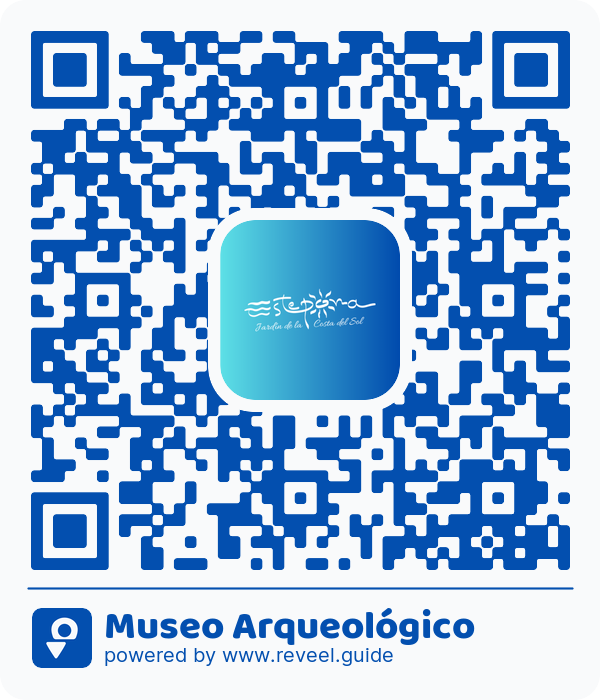
Museo Arqueológico


Museo Arqueológico
The Archaeological Museum of Estepona is located in the "Casa del aljibe", a building built in the eighteenth century on a cistern belonging to a tower of the Muslim period.
From 1853, when it was acquired by the Town Hall, it housed the Town Hall until 2011. The rich heritage that we can admire comes, on the one hand, from private collections and, on the other hand, from archaeological interventions carried out in recent decades.
Room I: FIRST POPULATORS, THE PHOENICIAN SAILORS AND THE ROMAN CONQUEST:
Among the prehistoric remains, a female statuette stands out, the Venus of Estepona, 5000 years old, from the important excavations of the Loma de la Alberica. Also on display in this room are various pieces from the Phoenician and Punic periods from the site of El Torreón.
Room II: THE SPLENDOR OF THE ROMAN EMPIRE:
The numerous Roman villas located on the coast have provided an interesting repertoire of materials, among which the grave goods from the tombs of the Historic Center of Estepona stand out. On the other hand, the presence of several Roman wrecks in the area allows us to admire products from all corners of the Mediterranean.
Room III: FROM THE BYZANTINE EMPIRE TO THE OMEYAN CALIPHATE:
The excavations carried out in the necropolis of Arroyo Vaquero have provided some interesting grave goods that illustrate the advance of the Christianization of the population of the area from the 5th century AD onwards, while the materials from the Castillo del Nicio and the Historic Center of Estepona reflect the progressive integration of the population into the Islamic way of life.
Room IV: ISTIBUNA, AN ISLAMIC MEDINA:
From the 12th century onwards, the Andalusian city that gave rise to today's Estepona knows moments of great splendor, as can be seen from the results of the archaeological excavations carried out in the Historic Center.
Courtyard:
In this central space we can find temporary exhibitions, as well as information regarding the rest of the museums and monuments of the city.
